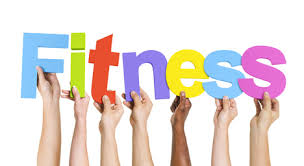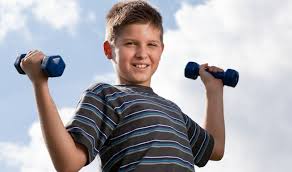|
Hi everyone, welcome back to the blog. It is week 5 of Health From Home! So far, most of our education has been geared towards our own health, and ways to optimize and balance our work lives with measures to maintain health and fitness. But what often goes overlooked (or, underlooked - is that a word? Well, it is now) is the physical health of youth that may be quarantined along with us! This post is dedicated to those with kids in the house, and how parents can find effective yet fun ways to keep the kids active at home. It's not an ideal reality, but today's youth are slower and weaker than previous generations. During this time of quarantine, it is essential that kids at home are getting an appropriate outlet for physical activity - 60 minutes per day, ideally. But included in that physical activity, should be some kind of regimented exercise, with strength training included. Home-school physical education or recess shouldn't be ignored, but it CAN be fun for parents and kids alike to sneak in some exercise. The benefits of youth strength training and exercise are very well documented. In 2018, the Physical Activity Guidelines Advisory Committee summarized a decade of research on the impact of physical activity on all demographics, across body types, medical conditions, race/ethnicity, age and gender. All are summarized here. Youth findings are summarized here. If you have a concern with a pre-existing condition, and are unsure about the efficacy or safety of exercise for a child, start by reading through this research, and chat with your doctor about a plan. There are no two ways about it - we absolutely have to find a way to keep the kids active! General Recommendations, according to the World Health OrganizationFor children and young people, physical activity includes play, games, sports, transportation, chores, recreation, physical education, or planned exercise, in the context of family, school, and community activities. the recommendations to improve cardiorespiratory and muscular fitness, bone health, and cardiovascular and metabolic health biomarkers are: 1. Children and youth aged 5-17 should accumulate at least 60 minutes of moderate - to vigorous-intensity physical activity daily. 2. Amounts of physical activity greater than 60 minutes provide additional health benefits. 3. Most of the daily physical activity should be aerobic. Vigorous-intensity activities should be incorporated, including those that strengthen muscle and bone, at least 3 times per week. 4. For those kids who are getting no, or very little, exercise, there should be a focus on slowly integrating exercise more and more, as they will be high responders to even doing just a little, with the goal to get to the 60 minute standard 5. It is best to break up the 60 minutes into 2-3 segments throughout the day. This mirrors the typical school day with recess and PE class, and allows kids to play hard for short durations. This style of play suits them perfectly It is a MYTH that resistance training is detrimental to physical development in youth! Well designed youth strength training programs can have a favorable influence on bone growth and development. Here are some guidelines to follow with youth resistance training:
And most importantly...!Now that we are playing parent AND teacher, it is up to parents to MODEL the behavior we want to see in our kids. This couldn't be more true in terms of exercise and physical activity. We should be emphasizing how FUN exercise is and reciting its basic merits and benefits any chance we get! If our kids see us doing a video, they are much more likely to jump in and participate. Sometimes it's nice to do our own workouts just to have personal time and focus on the self, but save some time and energy for physical activity with them! Until next time! More resourcesMy video, with my son, adapting exercise to a few common games
0 Comments
Leave a Reply. |
Broad Scope Narrow Focus BlogWelcome to the Broad Scope Narrow Focus Blog! I hope you find a lot of useful and applicable information as we explore the broad world of Wellness together. Check in often, as there will be new posts weekly! Enjoy Archives
September 2021
Categories |
||||||||||||
Services |
Hours & Contact InformationHours of Operation: The Facility is staffed Tuesday - Thursday 7a-5p
*Facility is accessible 24 hrs / 7 days a week e . [email protected] p . (616) 787 - 7710 |



 RSS Feed
RSS Feed